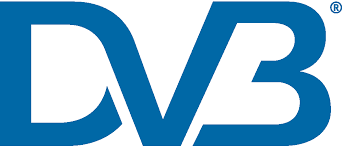Digital Video Broadcasting (DVB) is a set of international open standards for digital television. The DVB project was founded in 1994 and is an industry-led consortium of the world’s leading media and technology companies working together to design open technical specifications for digital media delivery. Today the DVB Project is an alliance of 200 companies worldwide, with a collective goal to agree on specifications for digital media delivery systems including broadcasting. It is estimated that nearly one billion DVB receivers have been deployed around the world. Below is a look into the DVB history.
DVB-S, DVB-C and DVB-T
DVB-S
DVB began their first phase of its work in 1993; this was where DVB-S was born from using the QPSK. The specification described a variety of tools for channel coding and error protection which were later used for other delivery media systems. The DVB-S system is used across the world.
DVB-C
The DVB-C system for digital cable networks was developed in 1994. It is centred on the use of 64 QAM, and for the European satellite and cable environment. If required, it has the capabilities to convey a complete satellite channel multiplex on a cable channel.
DVB-T
The digital terrestrial television system DVB-T was more complicated as it set out to cope with different noise and bandwidth environment, and multi-path. The key element is the use of OFDM, and the system has several dimensions of receiver agility, where the receiver is required to adapt its decoding according to signalling. There are two modes: 2K carriers plus QAM, 8K carriers plus QAM. The 8K mode can allow more multi-path protection, but the 2K mode can offer Doppler advantages where the receiver is moving. DVB-T is the least widely used system, through the roll-out of digital terrestrial television throughout the world has been slower than digital satellite and cable.
Adoption and use of DVB systems
In 1994, the DVB-S system was agreed, and the first DVB broadcast services in Europe started in spring 1995 by pay-TV operator canalplus in France. The DVB-T system was later decided in 1997, where it was the first broadcast in Sweden and the UK in 1998. DVB-T reached parts of Germany in 2002, and in 2003, there was Europe’s first analogue switch off in Berlin.
In 1997 the development of DVB project had successfully followed the initial plans, and the project was entering the next phase of its strategy, where they were promoting their open standards globally, and making digital television a reality. DVB standards were adopted worldwide and became the benchmark for digital TV globally.
DTVKit and DVB
DVB is the core of our software; it forms the strong foundations that allow us to continue to expand our solution. Our solution combines all of the elements needed for DTV devices for satellite, terrestrial and cable. The DTVKit software supports to integrate the components required to provide you with Digital Television for your set-top box or TV.
To find out more about our DVB solution, Click Here.
Source: DVB







